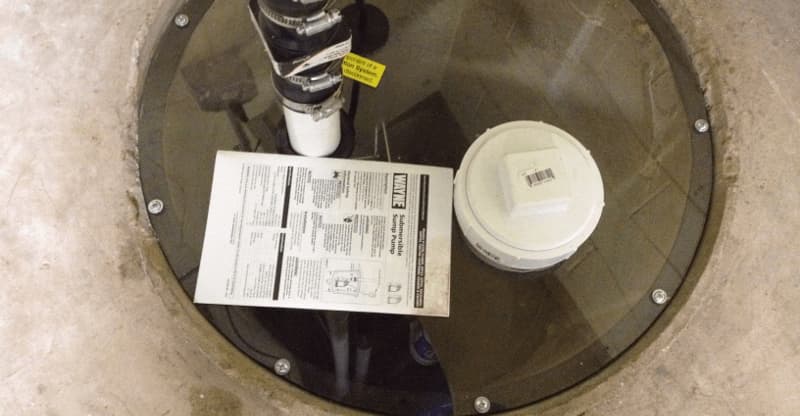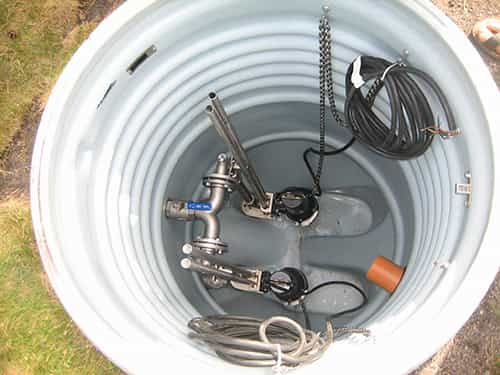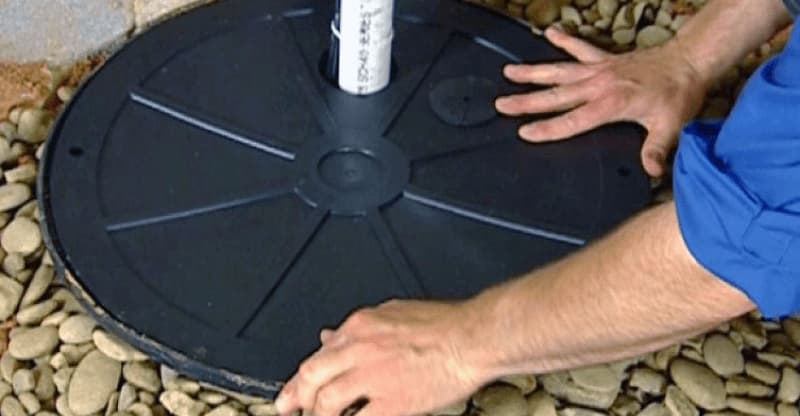Installing a sump pump in your basement is good – but you still need to test it on a regular basis. Skipping out on tests and other maintenance is a good way to flood your basement when the pump fails!
It is recommended you are testing your pump system at least once every 3 months – and more often if your basement receives a lot of groundwater. Keep reading to learn the exact step by step process our team uses – as well as a few tips and tricks for testing and inspecting sealed pumps, pumps with one cord, and pumps without a float switch.
In this guide we’ll take a look at:

How to Test Your Sump Pump – 7 Step Guide
There are a few ways to test a sump pump. Always start by checking the manufacturers owners manual for pump specific tests! Let’s take a quick look at a few ways you can test your pump without having to call a plumber.
1. Turn it On and Off
The best way to test anything electric is to turn it off and on. Cycling the power will reset the motor and possibly the CPU if the pump has an onboard computer.
After turning the power back on, wait a few seconds for your pump to start pumping water again. Remember, always properly turn off your pump or your risk a power surge frying the circuits!
2. Run the Pump
For this part, test out your pump by filling the pit with water and then letting it run. You will want to get a few buckets of water or a garden hose through the window. Start by filling the pump basin with a few gallons of water and allow your pump to run. If everything is working correctly, all the water should be gone in 5 to 10 minutes.
If you’re a homeowner who lives in an area with a lot of groundwater – we recommend running the test for twice as long.
3. Check the Drainage
Even the most powerful pump won’t keep your basement dry if the drainage pipes are clogged. Sump pump pits – and drainage lines – accumulate rocks, pebbles, dirt and other small debris that needs to be cleared from time to time.
After manually adding some water to your pump pit and verifying the pump is draining water, check that water is coming out the drainage line on the outside of your house. If nothing is coming out you may need to have your line professionally cleared!
4. Test the Alarm
An alarm does you no good if it does not work. Test your alarm each quarter by holding down the test button. If it is a WIFI alarm make sure it is still connected to the internet and sending alerts to your email or phone!
Our Top Rated Alarm

If you don’t currently have a WiFi water leak alarm we recommend installing one right away so you can get a notification on your phone right away when a leak starts in your basement.
5. Test the Battery Backup
If your pump system is equipped with a backup battery – or you installed one yourself – it is important to test if it is working, and the battery is charged. Test that everything is working correctly by disconnecting from a wall power source and adding a few buckets of water to your basin. If the pump kicks on your battery is working.
6. Remove Particles
Over time small pebbles and other particles of dirt will build up in your pump pit. These bits can cause serious damage if they get inside your pump and can clog your drain lines. Remove these by hand to prevent clogs and interior pump damage.
7. Check for Corrosion
Pumps with a plastic body can skip this step! Metal means corrosion and damage to the pump body. Always check for corrosion and rust on metal parts when cleaning your pump as it is a sign of future problems on the horizon!
Testing Sealed Sump Pumps
Sealed sump pumps are more difficult to test since you can’t access all of the basin. Testing is still possible in the same way as a normal pump with a few buckets of water to activate the motor and simulate rising water.
How to Test a Sump Pump Without Electricity
Testing a sump pump without electricity is tough – but not impossible. Water powered sump pumps can be tested with a garden hose and a bucket but electrical pumps are sensitive to motor burnout to you have to be careful dry running the pump.
How to Test a Sump Pump Without Water
Testing a sump pump without water is impossible and can damage your pump. Sump pumps need water to function so the best way to test is by filling the pit with a few buckets of water or running a garden hose into the window. Testing your sump pump without water can cause damage to the motor.
The best way to test your pump without water is to use a measuring tape to ensure your float switch is in the correct position to activate the pump as the water rises.
How to Test a Sump Pump Switch with a Multimeter
Multimeters are handheld devices that let you test a number of electrical connections. Attach your multimeter to the pump and run a test using a bucket of water – the electrical numbers should match what shows in your owners manual!
Related Posts
Top Rated Moisture Meters


